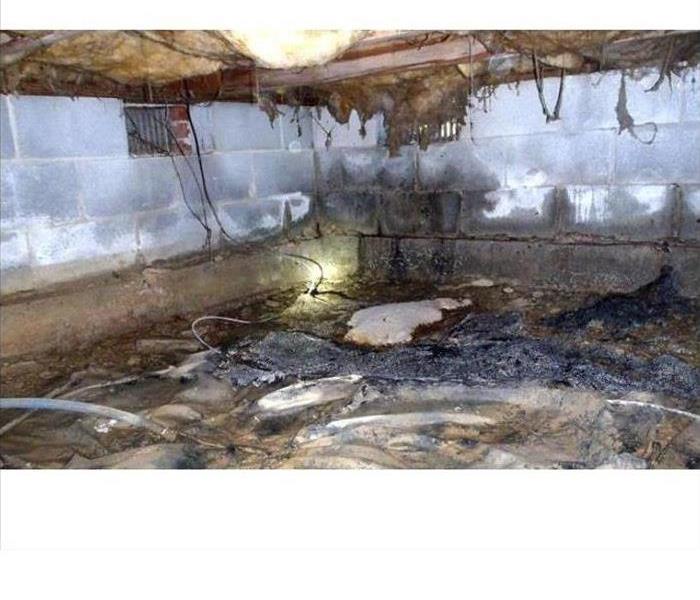Controlling Moisture in a Crawlspace
9/19/2019 (Permalink)
The moisture from these damp crawlspaces not only affects the wood floor structure immediately above, but can travel throughout a building to the detriment of other materials and even the occupants. This excess moisture often condenses on cooler surfaces in a home and can result in wet insulation or delaminated plywood in the attic, sweating pipes, ducts and toilet tanks and mold or mildew on exterior walls.
Increasing the airflow through a crawlspace might not be the best solution to reduce moisture. In some areas, the summer's warm, humid exterior air does little to extract the interior moisture. In the winter, cold air entering a damp crawlspace often just results in condensation forming. Moving air through a crawlspace, below a heated and cooled house, can also reduce energy efficiency and in cold climates, there is an increased possibility of frozen pipes.
The wettest crawlspaces (and basements) seem to be directly related to exterior drainage issues. Ground sloping towards the foundation, clogged or missing gutters, and downspouts not properly extended can all contribute to elevated moisture levels and even regular water intrusion.
Exposed earth in a crawlspace can also be a significant source of moisture. Covering the soil with a vapor barrier can reduce the amount of moisture vapor emitted from the ground into the crawlspace. These soil coverings need to be properly installed to be effective. The seams should overlap at least a foot and be sealed with appropriate tape. It needs to completely cover the soil and be sealed to the foundation. Most publications specify a 6-mil polyethylene sheet. Although adequate, it has little puncture resistance. I prefer cross-laminated, high-density polyethylene (think pond liner).
In addition to proper grading and a properly installed vapor barrier, the most pleasant crawlspaces I occasionally encounter do not have vents to the exterior. They also don't have any insulation under the floor above. Some have uncovered openings from an adjacent basement or have an installed heat source. This creates a somewhat "conditioned" space, similar to living areas of the home. Sealing against drafts, insulating the interior of the foundation, and insulating the perimeter of the floor structure below exterior walls creates a pretty efficient way to control humidity levels.
The crawlspace is to be treated like the rest of the building often results in the crawlspace causing less trouble. Preventing Moisture, Humidity, and Microbial growth is the best solution.
Call a Certified Contractor, to Clean and Remediate Microbial






 24/7 Emergency Service
24/7 Emergency Service
